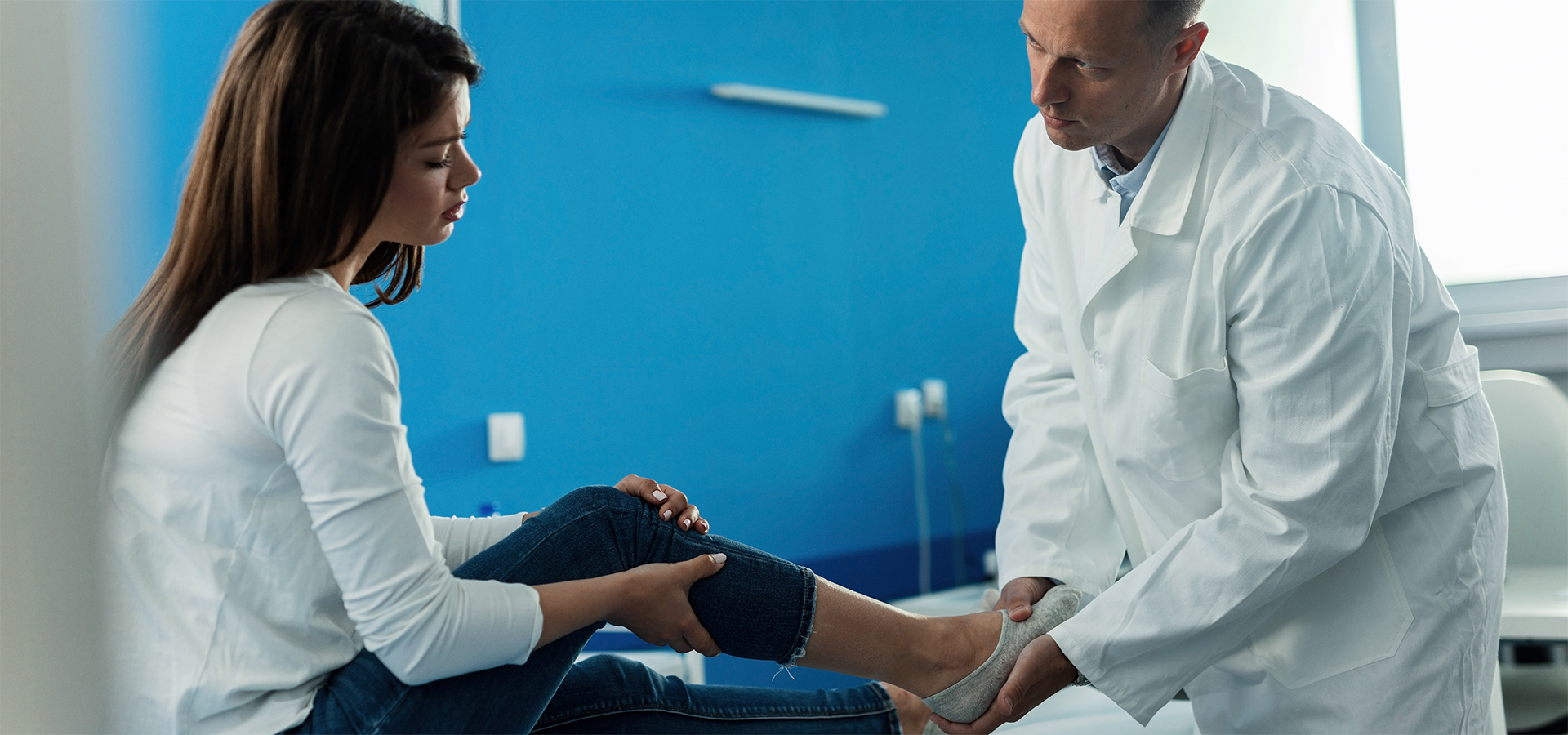
Gait Analysis System for Podiatry Clinics
No one needs to tell you how important good data is if you work in a podiatry clinic or research lab. Determining the specifics of plantar loading and human movement—both effective and ineffective—is foundational to providing good treatment plans, selecting the right orthotics, and preventing future injury.
That means good data; however, getting that data isn’t so simple. You're in the dark without the proper research or assessment protocols to generate the plantar pressure and gait data. This lack of protocol leads to guesswork, rework, and ineffective workflows.
Increasing patient outcomes requires better equipment and software to fill in the gaps in your current protocols. It’s time to say goodbye to your everyday frustrations and hello to gait analysis solutions.
To that end, let’s look at how gait analysis works and where it goes wrong. Then, we’ll consider the role a comprehensive gait analysis system plays in your workflow, as well as the main benefits and how to get started.
Why Gait Analysis?
Gait analysis is a critical tool in any podiatry clinic’s toolkit. It provides baseline information about how a patient moves, which can explain why mechanical issues crop up. This information can also track the progression of degenerative diseases, inform footwear choices, and monitor patient progress after implementing interventions.
However, as crucial as gait analysis is, it often misses the mark.
Where Gait Analysis Goes Wrong
Many podiatry clinics, even those using high-tech equipment, suffer from a lack of comprehensive data. Their partial data might be good, but patients without a complete picture will not experience the best outcomes.
The main problem? Normal vision-based gait analysis is flawed. Even cameras have their downsides. Without sensors, you can’t see what’s happening at all times. This flaw increases the chances of:
- An incorrect or difficult diagnosis.
- Ineffective treatments.
- Patient dissatisfaction, discomfort, and pain.
- Misunderstood conditions on the part of the provider and patient alike.
- Unreliable equipment and product design deficiencies.
- Frequent recalibration and rework.
Podiatrists, orthotists, and other professionals frequently experience these problems. Luckily, a comprehensive gait analysis system can address such issues.
Why Do You Need a Comprehensive Gait Analysis System?
Even multiple cameras can’t always show exactly what’s going on. Sensor-based systems can fill in the gaps where motion is too fast or video-based analysis is blocked (as between two surfaces, such as the foot and the ground).
A wearable gait analysis system moves beyond the limitations of cameras and the human eye. With such a system, you can use data to paint a 3D picture of what is happening in the human body, both in motion and at rest. Play the simulation as often as you like, at whatever speed, to determine precisely what is happening, where, and when.
This system helps:
- Reduce rework and inconsistent results.
- Increase patient satisfaction, decrease pain, and speed healing times.
- Decrease injuries caused by incorrect movement or areas of high-pressure.
- Assist with footwear recommendations.
- Tailor treatment and rehabilitation plans.
Overall, you’ll see a better workflow, a greater understanding of patient issues, and staff-wide enlightenment about how best to serve patients.
Tools for Gait Analysis
There are two main tools without which any podiatry clinic misses the whole picture. Using sensor-based technology, gait and motion insoles and walkway stance pads provide high-fidelity data that cameras and human vision can’t match. The technology captures data at thousands of distinct points and hundreds of frames per second, giving you unparalleled insights into the intricacies of human motion.
Gait & Motion Insoles
Gait and motion insoles are wearable insoles that slip into any footwear, allowing patients to use their own shoes or try on recommendations and then test the effects. By mapping pressure points, insoles transmit data on what works and what doesn’t while patients are in motion.
Because the insoles slip into shoes wirelessly, the patient is not bound to a specific area. They can move freely and perform a variety of exercises or movements.
Walkways and Stance Pads
Walkways and stance pads assess how the patient moves on a stationary surface or a treadmill. These pads capture detailed data about the gait cycle as the patient moves from one step to another and elucidate problems.
Walkways and stance pads are less mobile than clinical insoles but are excellent at assessing the results of repetitive movement. This assessment can benefit people with job-related injuries from repetitive movements or patients whose degenerative conditions require careful tracking.
Benefits of a Sensor-Based Analysis Platform
A wearable gait analysis system enables you to:
- Gain information about the gait cycle and stance phases.
- Interpret gait measurements, such as heel strike or joint angles, more accurately.
- Employ sensor-based motion capture systems that illuminate the human gait.
- Visualize temporal-spatial data with a gait analysis system that generates raw data and 3D models.
- Set more refined gait parameters for data collection in your analysis platform.
- Explore pressure distribution, gait, and stance-based motion for conditions ranging from simple sprains to cerebral palsy.
- Fill in the gaps left by current analysis systems.
Given the massive benefits of putting a gait analysis system into effect, you can’t afford not to have such a system at your clinic. With faster results, better data, and more straightforward diagnoses, you will help more people and enhance your reputation and brand.
Let XSENSOR Help Today
To learn more about creating a comprehensive, wearable gait analysis system, check out the human performance solutions from XSENSOR. Gain more accurate insights about patient movement, increase the efficacy of your protocols, validate interventions, boost your confidence in footwear recommendations, and perform repeatable tests that don’t require constant recalibration or frequent upgrades.
Don’t wait any longer. Schedule a demonstration with one of XSENSOR’s Human Performance experts today.

